Meet the Stonemason at York Minster Who Created the Queen Elizabeth II Statue
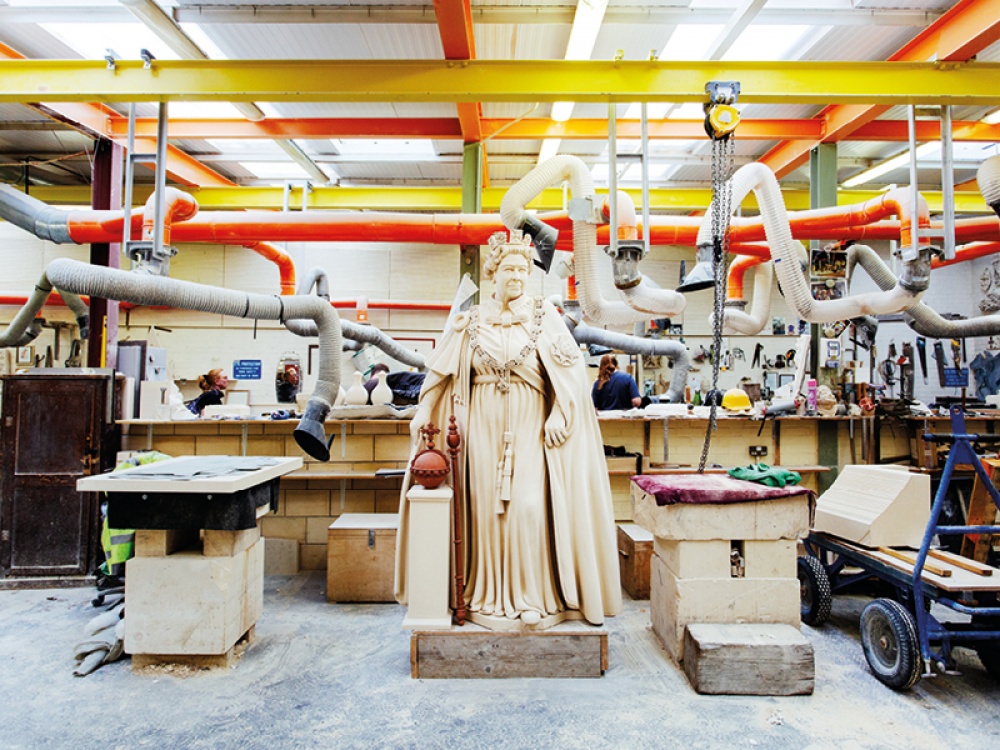
A new statue of Queen Elizabeth II is leading the way for a digital future of stonemasonry, but won't stop people getting hands-on
Johnathan Swann, a documentary and portrait photographer, recently shot a series of photographs which he’s titled Almost Forgotten, focusing on heritage red list crafts. Each craft he photographed is classified as endangered or critically endangered by the Heritage Craft Association.
Johnathan’s interest in heritage and endangered crafts began in his third and final year of university when he was trying to find an interesting and relevant subject to base his final major project around. ‘It was then I discovered the Heritage Craft Association, and the good work they are doing to help prevent the extinction of heritage crafts across the UK,’ he explains. ‘Currently on the red list there are 56 crafts classified as critically endangered and a further 75 classified as endangered. Many of the crafts on the list have played a vital part in English heritage, and this is what makes it so important to protect these crafts for generations to come – as once they're gone they will be gone forever.’
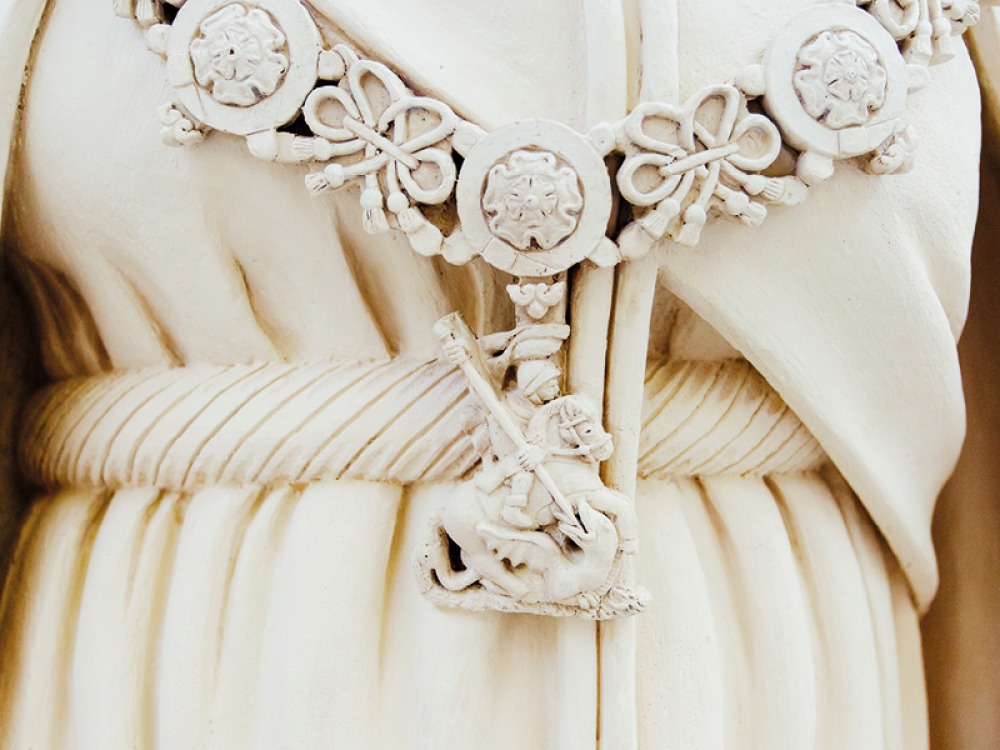
Almost Forgotten, a series which looks at makers from every corner of the UK, is a celebration of those who have dedicated their lives to upholding some of the UK's most endangered crafts. ‘The unique tools used, the materials, and the workshops are all things that make each craft so different, but at the very heart of each craft there is a highly-skilled individual or team,’ says Johnathan. ‘The main challenge for me as a photographer was to capture the uniqueness and nuances of each craft; these are the things that make craft so special.’
When Johnathan discovered that York Minster were going to be implementing computer aided design and CNC machines into their practices, he was keen to include them in this project. ‘Implementing these elements will mean massive time savings in the restoration of the Minster,’ he explains. Johnathan’s series of images taken at the Minster are based around the production of a new statue of Queen Elizabeth II for an external niche and the craftspeople who produced it. ‘By using CNC machines, it has dramatically decreased the amount of time required to produce a statue of this size, although many stonemasons were still required to add texture and detail to the final statue.’
Read More: Newcastle’s Vick Hope Joins Liz Earle as First Ever Celebrity Partner
The statue was designed using 3D modelling software, then cut out from one single block of stone using a CNC machine. ‘The CNC machine provides the stonemasons with a rough version of the statue,’ Johnathan explains. 'Then a highly skilled team of stonemasons have to complete the statue by hand, adding all the details.’
Although computer-aided design and CNC machines have been implemented into the everyday practice of the stonemasons at York Minster, Johnathan (from what he has learned throughout the project) argues that the need for skilled stonemasons has not gone away. ‘The stonemasons seemed excited about the use of CNC machines as it meant they would be able to spend more time on the intricate details of each carving,’ he says. ‘York Minster will always require stonemasons to help with the preservation and upkeep of the Minster.’
Read More: Yorkshire Photographer Captures the County's Moorland in Seven Stunning Pictures

Richard Bossons is a long-time stonemason at York Minster and has been working hard to help produce the statue. He’s been working in stonemasonry for just under 30 years (and has been at York Minster for over a decade). ‘I started down in Dorset and I've moved progressively North ever since: Somerset, Gloucestershire (I worked in Gloucester Cathedral), around the Cotswolds and then York Minster.
‘I think I'd had 30 jobs before I realised it was possible to do a job that I would actually enjoy,’ Richard laughs. ‘I was a bit slow on the uptake. All of my spare time was spent travelling around looking at old ruins like churches and temples. I thought: why can't I do a job that's connected to this? It wasn't an option in school. It was do your A Levels, go to university and do something academic, so it wasn't something I'd thought about until then. It was a happy fork in the road.’
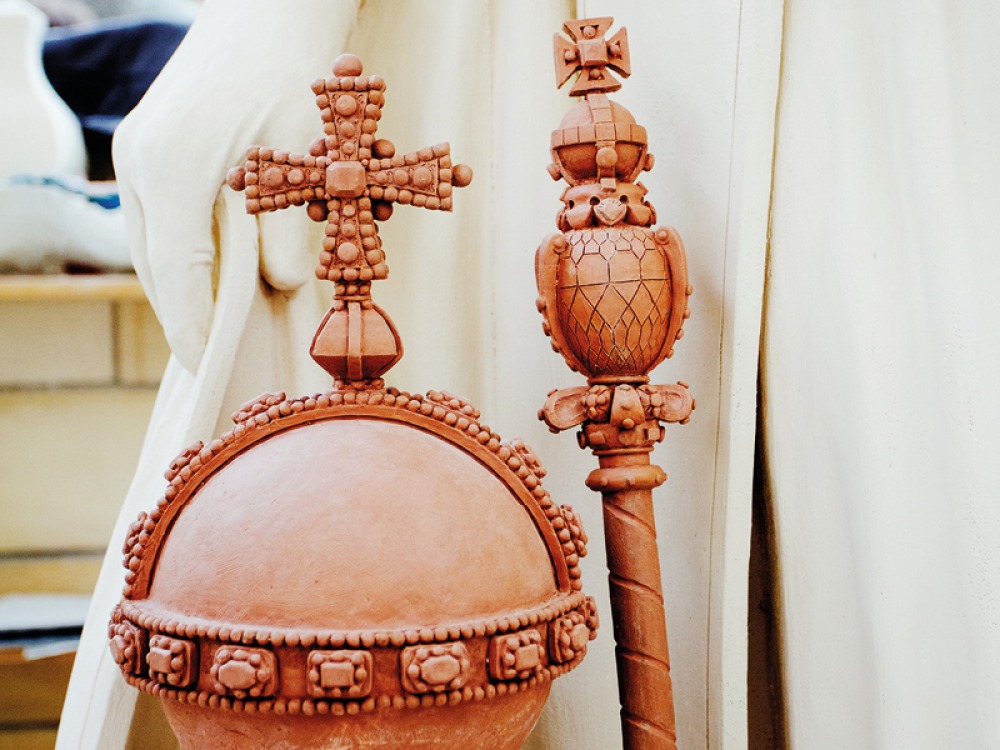
A creative person, Richard enjoys stonemasonry because it involves making something that will outlast you. ’As well as being creative, it's also got a real discipline to it,’ he explains. ‘It has to fit with the building and therefore has to fit with the stone that someone else has worked. There's that collaborative effort as well, which I really enjoy. It has to be right. You can't just free-form it and you certainly won't get away with cutting corners and making mistakes.’
He says creating the new statue of Queen Elizabeth II was a ‘once in a lifetime opportunity’. ‘These opportunities are very few and far between,’ he says. ‘It was a very rare opportunity to grab with both hands.’ And that’s exactly what he did. ‘It originally started with a speculative design drawing and we had to go through a lot of processes in terms of conservation and restoration (whether you should add something that wasn't there before), and at the very beginning I must admit I wasn't convinced it was actually going to happen – that we would actually put a new statue on the front of the building. It still hasn't really sunk in.
‘It started with scale and design drawings to get a general outline to help visualise the structure. Once we had the go ahead, we had to really tune that down to the fine details so I created a model. It was only when everybody had seen that, that I got the green light to then start working on a full-size model. When that was complete, I could then start the carving. There were plenty of stages to get through before I could get to working on the stone.’
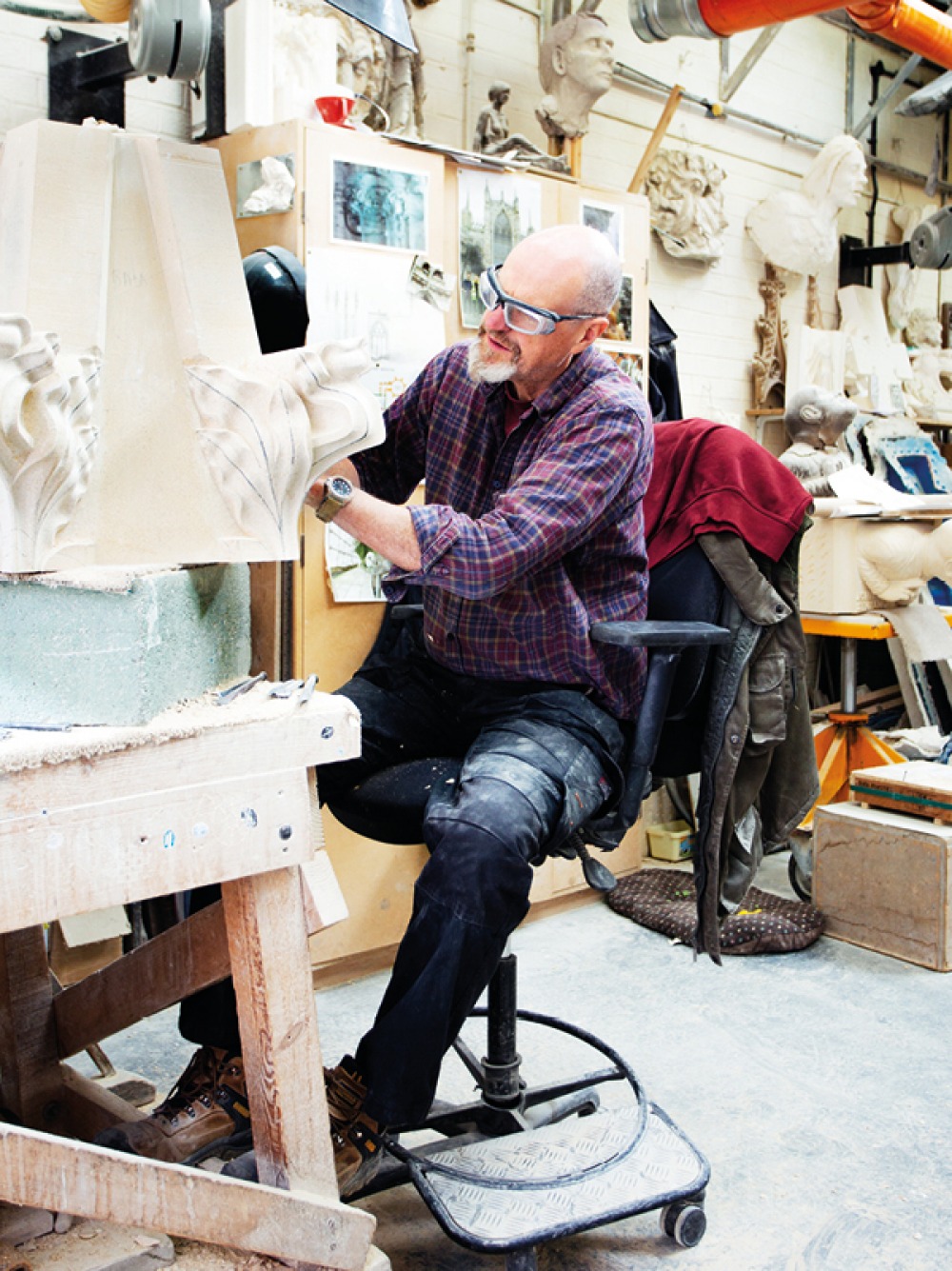
As a stonemason working on York Minster Richard’s first duty of care is the building itself. ‘I was very worried about doing something that didn't look like it belonged on the facade,’ he admits. ‘That was as big a design aspect as getting the likeness or getting the regalia right. Hopefully I've created something that people will see as part of the facade, as if it has always been there.’
York Minster welcomed The King and The Queen Consort to the cathedral on 9th November for the unveiling and blessing of the new statue. ‘It was a real treat that King Charles actually came to see it,’ Richard says. ‘He has personally been such a passionate advocate of traditional crafts.’ His Majesty unveiled the new statue of the late Queen, and The Archbishop of York blessed the statue and offered prayers for the day.
York Minster, a gothic masterpiece in stone and stained glass, has been a place of prayer and pilgrimage for more than 1,400 years and worship is still at the heart of life here. Each year around 600,000 people from all over the world come to explore the Minster.
‘There is an argument that if something has eroded away, maybe you shouldn't replace it but we're fortunate at the Minster that a lot can be restored, so we try to put things back to what they would've been,’ Richard says. ‘Visitors get to see a building that has amazing details and the carvings and nice crisp lines and shadows that the original masons intended the building to have. I do think it’s important that we don't just eventually end up 100 years from now with an amorphous blancmange of decaying stone which is hard to read and hard to understand. It is a living building and it is still used today for the purpose it was built for, so I think we have to maintain the fabric accordingly.’
Read More: Northumberland-Based Writer on Her New Memoir and Taking Inspiration from Her Local Landscape
Having worked as a stonemason for so many years, Richard understands the importance of keeping this craft alive. ‘It's the continuity of several thousands of years of history and its a very niche thing to find people who can apply that level of care for things that might be 150ft in the air,’ he says
York Minster’s apprenticeship scheme is helping to support the younger generation of stonemasons. Their Stoneyard houses the complete range of craft and trade skills that are vital to maintaining the building, and during 2023, the York Minster Fund will be investing in new facilities and technology to support this work, responding to innovations and modern processes such as digital technology, 3D scanning, Computer Aided Design (CAD), 3D printing and stone cutting technology.
Read More: Meet World-Renowned Entrepreneur and ‘Queen of Happiness’ from Newcastle
The apprenticeship includes a programme of part-time study at York College, and those taking part will complete the Cathedral’s Workshop Fellowship towards the end of the apprenticeship, with all associated costs met by the Minster. ‘There aren't very many places where you get an in-house apprenticeship like you do here,’ says Richard. ‘We have a four-year apprenticeship running here and we're fortunate enough to have the funding to start a new apprentice every year. There are only seven or eight in-house cathedral workshops in the country now so those opportunities are quite fleeting when it comes to working on a building like this. It's very important that we send people out into the commercial world who have worked on such amazing buildings.’
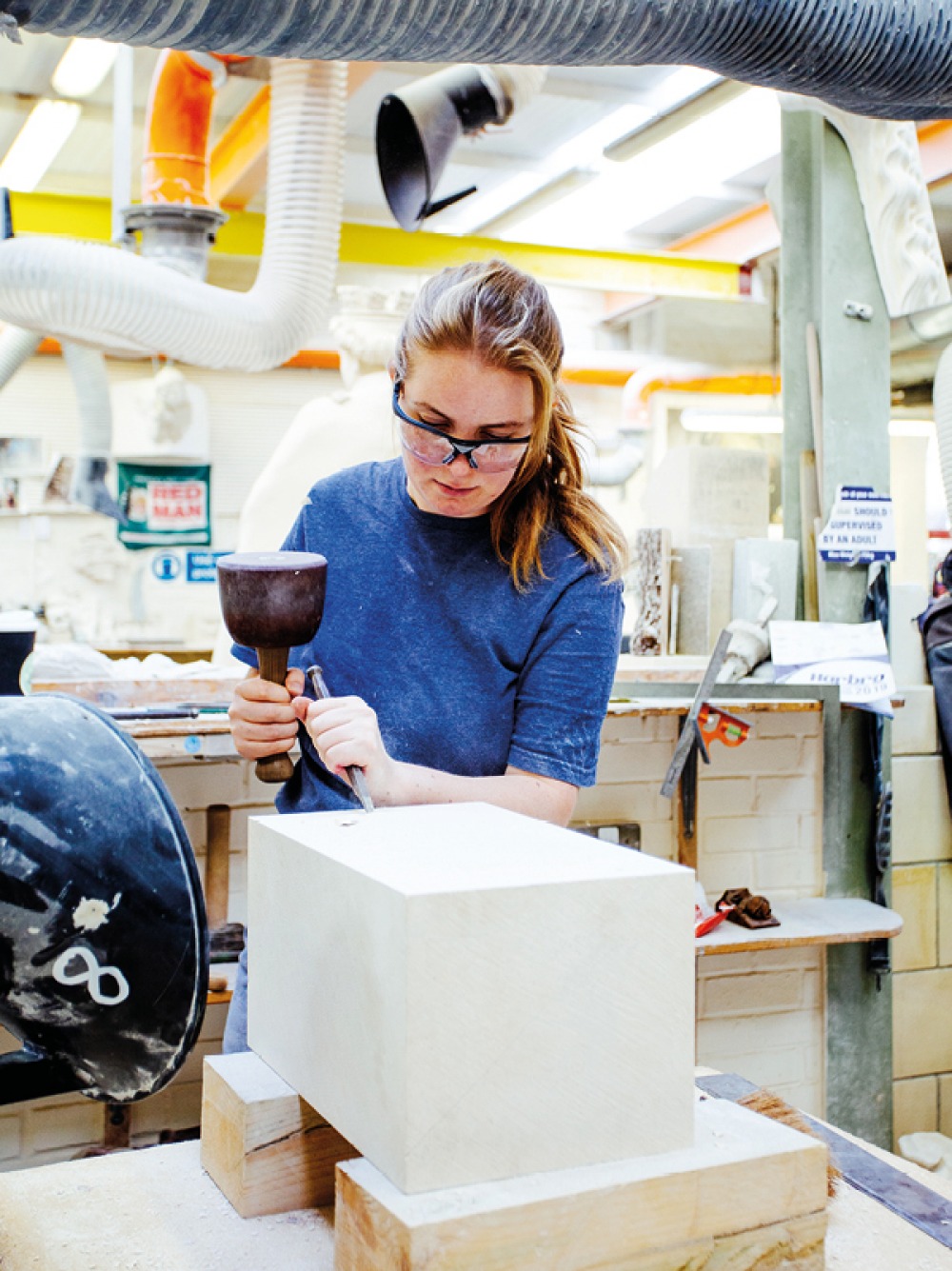
Harriet Bailey is a stonemason’s apprentice currently in training to become part of the team that are restoring the Minster on a day-to-day basis – proving the point that even with the introduction of computer aided systems, the need for stonemasons will never be lost.
She is currently doing a four-year apprenticeship, taking part in both site work and banker work (banker masons are stonemasonry professionals who specialise in the manual preparation of stone blocks). ‘I’m quite practical. I like to keep my hands busy and I wanted a job that was both creative and skilled,’ Harriet says. ‘Once you’ve learned the craft, you can take it anywhere. There’s also the heritage side of things. I like beautiful things and I value the beautiful things we have – places that have history.’
Harriet started the apprenticeship in July this year. ’It’s exciting to have four years to get some really good experience,’ she says. ‘Me and another apprentice both started at the same time and we had done a bit of stonemasonry before but this is giving us plenty of opportunities.
Read More: Newcastle Charity, Street Paws on Keeping Homeless Owners and their Pets Together
‘I do feel very lucky to be at York Minster because there are so many resources and opportunities to learn new things. People are very supportive when it comes to trying things out, and there’s plenty of space to do that. It’s a really encouraging atmosphere, encouraging you to find the best way that works for you, so you get a really good understanding of it. The statue was created using CNC machines and 3D scanning and I know that technology is progressing so I’m sure that’s something I’ll be learning more about. New workshops are going to be taking place, and will be incorporating technology. It’s definitely an exciting time to join; it’s good to be a part of that change.’
Although the statue was complete by the time Harriet joined the Minster, she did get to see it being put in place. ‘I got to go up in the cherry picker (which was quite daunting) so although I wasn’t involved in the making, I did see the process of fixing it to the Minster,’ she says. ‘It was cool to see how a big project like this one is planned and how it’s executed.’
At the moment she’s working on practice stones, but it won’t be long before she’s able to carve a stone that will go into the Minster. ‘That’s exciting,’ Harriet admits. ‘To leave your mark somewhere like that is so rewarding. It’s lovely to get up close to the building and see the detail. You learn a lot about the future and conservation of plenty of different cathedrals.’
‘In a fast-paced world and the ever growing demand for mass produced items, more crafts than ever before are becoming endangered,’ says Johnathan. ‘Through my photography I want people to understand that with the right training many of these crafts can still be viable today. I hope people see and appreciate the skilled craftspeople working hard to preserve these crafts in the United Kingdom.’










